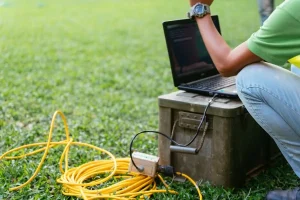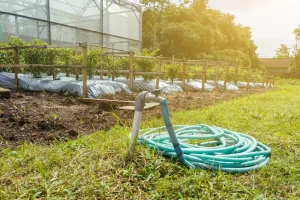The question of what an agricultural irrigation pond is carries significance in terms of modern irrigation systems. Therefore, they are water storage areas created to meet irrigation needs. They also enable the accumulation of water from natural sources. In this way, water supply becomes easier during dry periods. Agricultural irrigation ponds are usually made of earth or concrete. In this case, the capacity is determined according to the needs of the area. They can also be fed by surface and groundwater. This ensures efficient water use from different sources. Ponds work in an integrated manner with irrigation systems. Therefore, they are compatible with drip and sprinkler systems. Furthermore, water transmission under pressure is facilitated. This also saves energy. Since the ponds are open, evaporation may occur. Therefore, some systems prefer to use covers.
Table of Contents
- Construction Stages of Agricultural Irrigation Ponds
- Landscape Pond Irrigation
- Irrigation Pond Lining
- Irrigation Pond Insulation
- Insulation Methods in Agricultural Ponds
- Conclusion
- Frequently Asked Questions
Construction Stages of Agricultural Irrigation Ponds
The construction stages of agricultural irrigation ponds are shaped by the planning and engineering process. Therefore, the first step begins with selecting a suitable location. In addition, the slope of the area, soil structure, and water source are evaluated. In this way, the most efficient location is determined. The pond capacity is calculated according to irrigation needs. In this case, the production area must be taken into account. Furthermore, the design process must be carried out under expert supervision. This ensures legal and technical compliance. During the excavation phase, the ground is dug up. Therefore, the ground stability must be checked. In addition, a clay layer or membrane is used for ground impermeability. This prevents water leakage. Reinforcement and formwork operations are applied in reinforced concrete structures. In addition, drainage and filling systems are integrated. This ensures water control.
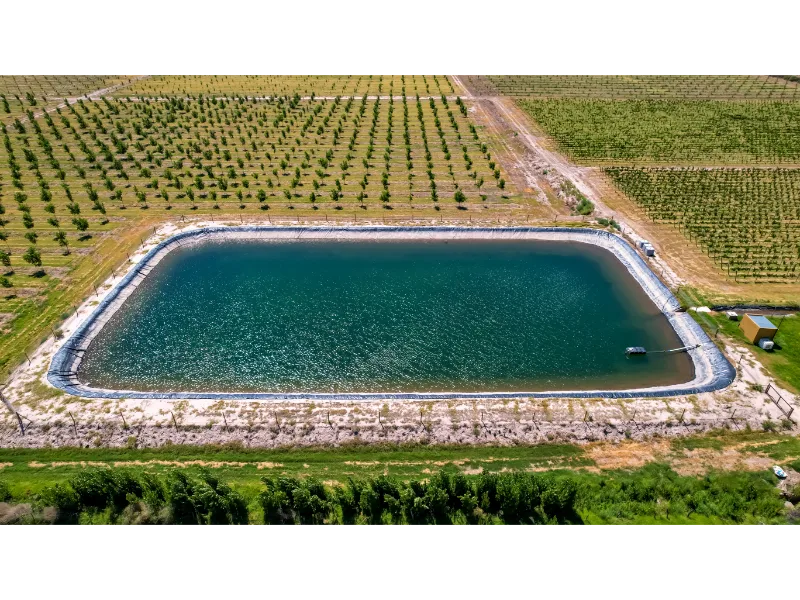
Landscape Pond Irrigation
Landscape pond irrigation is a preferred method for the sustainable maintenance of gardens and green spaces. For this reason, water from decorative ponds is used as a resource. It also provides functional benefits while contributing to the aesthetics of the environment. In this way, water savings and visual integrity are achieved simultaneously. The water taken from the pond is filtered and transferred to the irrigation system. In this case, clean and sufficient water is delivered to the plants. It can also work in conjunction with drip or sprinkler systems. In this way, specific irrigation is provided for different plant types. Regular maintenance of the pool water is important. Therefore, measures should be taken against algae growth and odor. Furthermore, water circulation can be ensured with automatic pumps. In this case, the system operates continuously and efficiently. Solar-powered pumps save energy.
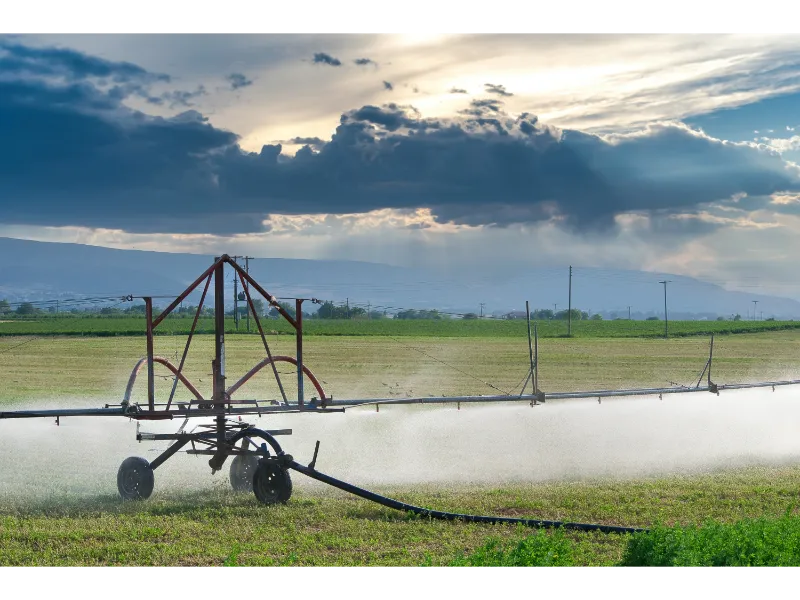
Irrigation Pond Lining
The irrigation pond liner is a special insulation material that keeps water inside the pond. Therefore, it prevents water leakage and minimizes water loss. Additionally, its durable and long-lasting structure increases agricultural productivity. This eliminates the soil’s permeability issue. Liners are typically made from PVC or HDPE material. As such, they are resistant to different climatic conditions. Furthermore, its UV-resistant structure makes it unaffected by sunlight. This minimizes the risk of deformation. The thickness of the liner is determined according to the depth of the pool. Therefore, taking the correct measurements is important. In addition, the seams must be joined using special methods. This ensures complete leakproofing. Liners are rolled out and integrated with the ground.
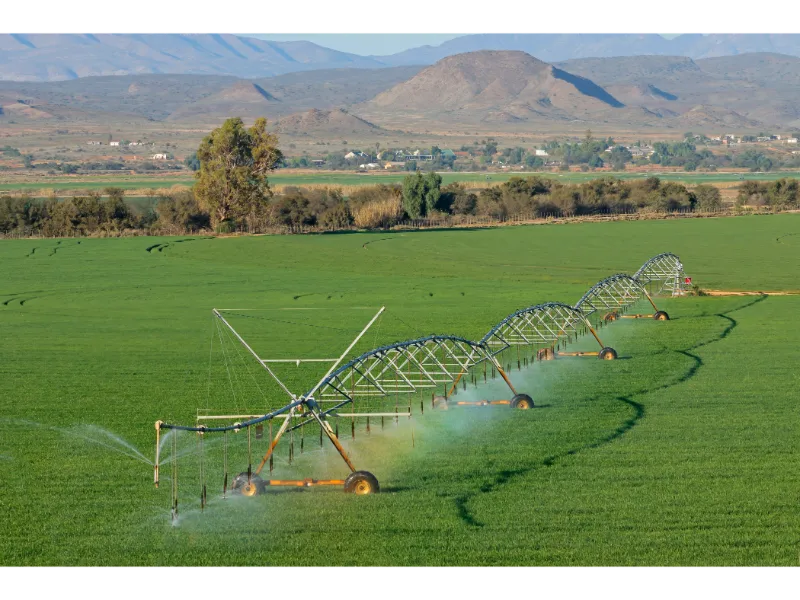
Irrigation Pond Insulation
Pool waterproofing is a critical application that ensures water remains inside the pool. Therefore, the goal is to prevent leaks and reduce water loss. Furthermore, insulation extends the life of the pool. This reduces maintenance costs and increases efficiency. PVC or HDPE tarpaulin is commonly used as insulation material. In this case, the choice of material is determined by the structure of the pool. Furthermore, proper preparation of the ground is important before application. This ensures that the insulation surface is smooth. Tarpaulins are welded to ensure leak-proofing. Therefore, the joints must be carefully joined. In addition, the edges must be secured. This protects against wind and external influences. The insulation process can be applied to both new and existing pools.
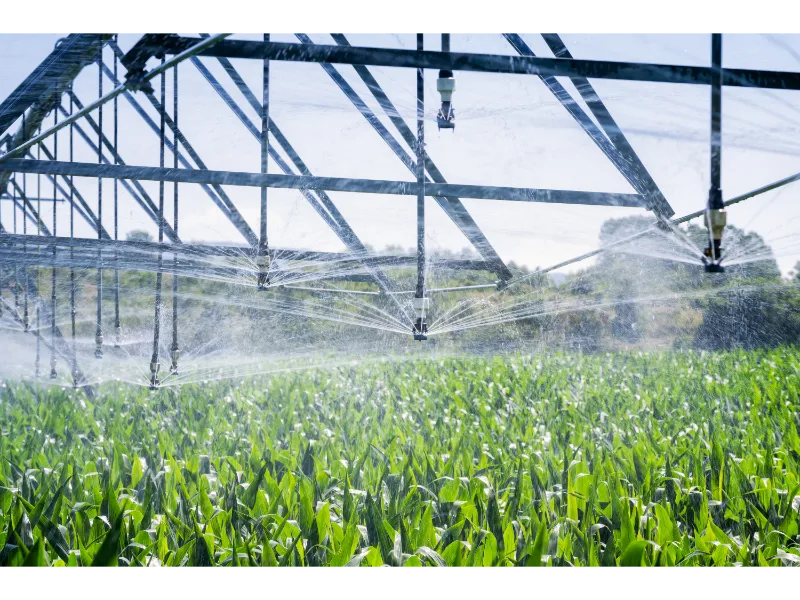
Insulation Methods in Agricultural Ponds
Isolation methods in agricultural ponds are applied to protect water and prevent leaks. Therefore, the correct isolation technique ensures long-term use. It also increases resource efficiency by preventing water loss. In this way, irrigation processes become more sustainable. The most common method is insulation with tarpaulin. In this case, PVC or HDPE tarpaulins are preferred. Furthermore, these materials are resistant to UV rays. This prevents deformation caused by the sun. When preparing the ground, a smooth and clean surface must be created. For this reason, protective felt can be laid under the tarpaulin. In addition, tarpaulins are joined with a hot air source. In this case, complete leak-proofing is achieved. Concrete coating is also an insulation method. This makes pools sturdy and durable. Chemical insulation products can also be used as a supplement.

Conclusion
What is an Agricultural Irrigation Reservoir? Isolation methods in agricultural ponds are applied to protect water and prevent leaks. Therefore, the correct isolation technique ensures long-term use. It also increases resource efficiency by preventing water loss. In this way, irrigation processes become more sustainable. What is an Agricultural Irrigation Reservoir? The most common method is insulation with tarpaulin. In this case, PVC or HDPE tarpaulins are preferred. Furthermore, these materials are resistant to UV rays.This prevents sun-caused deformation. The ground must be smooth and clean. Protective felt can be placed under the tarpaulin. In addition, tarpaulins are joined with hot air. This ensures complete leak-proofing. Concrete coating is another insulation method. This makes pools sturdy and durable. Chemical insulation products can also be used as a supplement. What is an Agricultural Irrigation Reservoir? It is a sustainable system where correct insulation directly supports efficiency and durability.
Frequently Asked Questions
How long does it take to build an agricultural irrigation pond? It is usually completed within 1–3 weeks.
What materials are used in pond construction? Soil, concrete, PVC, or HDPE tarpaulin are used.
What is the lifespan of the tarpaulin? It varies between 10–25 years depending on its quality.
What should be done if the liner is punctured? The torn section can be repaired with a special weld.
What happens if insulation is not installed? Water leaks, efficiency decreases, and costs increase.
Which is more durable, concrete or liner? Concrete is more durable, while liner is more economical.
Is a landscape pond suitable for irrigation? Yes, it is suitable when used with filtered systems.
What methods are used for insulation? Tarpaulin covering, concrete plaster, and chemical insulation methods are preferred.
How can I reduce evaporation in the pool? Shading nets or cover systems can be used.
How often should pool cleaning be done? It should be done at least twice, at the beginning and end of the season.





